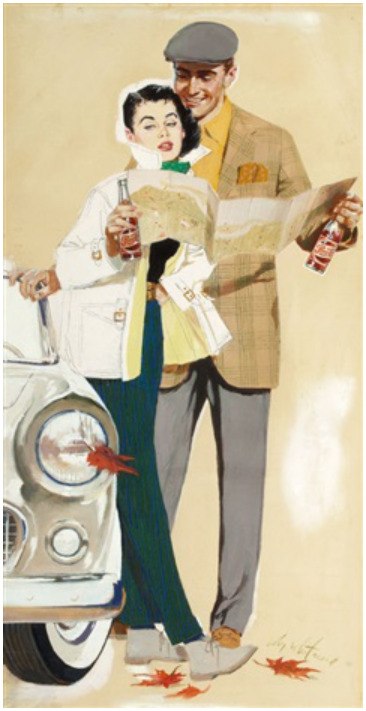Last Updated on March 27, 2024 by Masha Eretnova
Though Gouache is infamous for being similar to watercolor, reputable painters still used Gouache as their primary medium and iconic paintings were used with Gouache.
Gouache may be similar to watercolor, but some artists prefer it over others. There’s no loss, and we understand because Gouache is very worth it, even for beginners.
Many artists used gouache for painting, illustration, and drawings such as Francois Boucher, Jacob Lawrence, Stuart Davis, Paul Klee, Picasso, Pissarro, Henri Matisse, Mary Cassatt, Edward Hopper, Édouard Vuillard, Coby Whitmore, and many others.
The Birth and Triumph of Venus, François Boucher

Moonlit Landscape, 1892

William Trost Richards (born 1833, died 1905) is an American landscape painter who often painted small works on tone paper. He was equally competent in oil.
His masterpiece, Moonlit Landscape, which Richards painted technique in 1892, shows the majestic gouache output when finished. The night sky and the moonlit landscape offer the midnight scenery of his dreams.
The painting perceives Richards’ medium and portrays his abilities in their prime as a watercolorist. He used delicate hues to capture the effects of light and mood on the landscape of this painting.
Watercolor was not only Richards’ medium but also oil paint. In the late 1860s, Richards started his most prosperous period in art, specifically watercolor production.
Freshwater Pond Life, ca. 1970
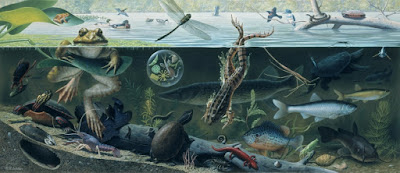
Ned M. Seidler (died 2007) was a natural history illustrator for National Geographic and other services in the 1970s. His works typically comprised ecosystems compressed in one scenario.
Seidler is a respected staff member in National Geographic even after leaving in 1967. His graphic illustrations are of natural scientific phenomena and others that brought attention to magazines until he retired.
Marine Painting, ca. 1950s

Carl Evers (born 1907, died 2000) was a contemporary painter specializing in maritime painting. He used watercolor and Gouache as his media in painting the favorite scenarios we see today.
Evers was born in Dortmund, Germany, and studied in London before migrating to the United States in 1947. He painted several Marine scenes published in many books, boosted his career, and received awards.
Memphis Belle, ca. 1940s
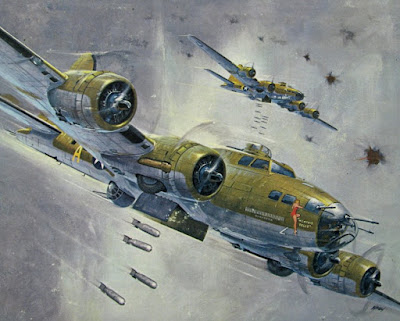
Jack Leynnwood (born 1921, died 1999) was dubbed the Rembrandt of Revell plastic model boxes. Leynnwood was a teacher that taught Gouache painting during off-campus seminars.
Leynnwood is responsible for the fantasy of aircraft and vehicles that made children lust for kit after kit. Not only it made them buy the model itself, but also for the illustration.
Man with Arms Crossed, 1909
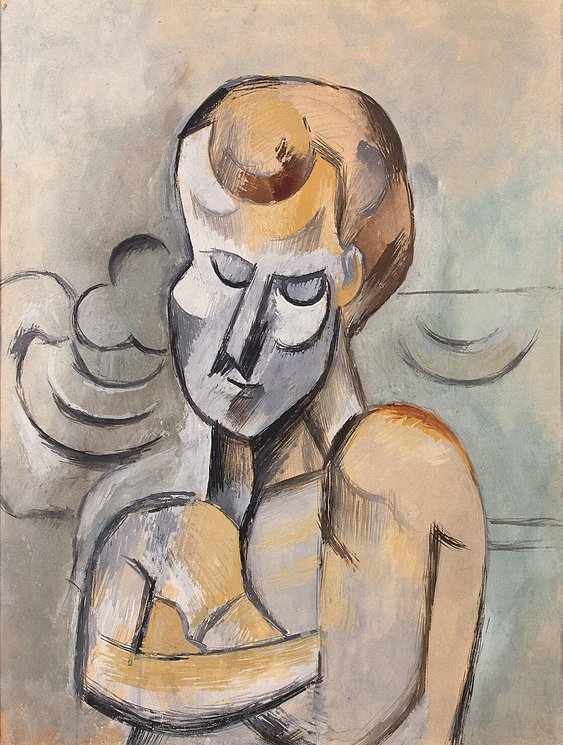
Pablo Picasso (born 1881, died 1973) was an influential artist in the 20th century. Picasso’s pieces inspired many artists today with his art styles, techniques, and ideas.
Picasso is responsible for many art designs we see today, such as the collage and constructed sculpture. He helped explore the art world with various designs and ideas.
Picasso’s death engaged the critical community to prefigure the Neo-Expressionism era of art. Before his death, he became more daring, and his works were colorful and full of expressions.
The Adoration of the Shepherds, ca. 1740-70

François Boucher (born 1703, died 1770) was a French painter specializing in Rococo-style painting. The painting above is one of only three surviving Gouache paintings.
The composition is very similar to a previous piece he commissioned. Historians considered that this Gouache was a preparatory study for the commissioned work.
The Scarlet Sunset, ca. 1830

Joseph Mallord William Turner (born 1775, died 1851), known better as William Turner, was a watercolorist and other media he practiced during his lifetime.
As a child, Turner’s talent was recognized by many. His financial independence allowed him to thrive freely. Writers featured his works in several books and learning materials.
Pissarro, Two Women in a Garden

Camille Pissarro (born 1830, died 1903) was an Impressionist and Neo-Impressionist artist starting in the 1880s. He established a collective group during his prime.
During his career, he shifted from impressionist landscape painting to compositions constructed with small, coma-like strokes that described scenarios of a peasant where his insights were doing something.
For instance, after all the years of his career, he painted many gouache pieces of female figures and cowkeepers depicted in several postures against sophisticated landscapes.
His other work – Fan Mount: The Cabbage Gatherers – is another gouache on silk painting.
Birds Nest in Cattails, ca. 1875
Fidelia Bridges (born 1834, died 1923) was an American painter best known for her still-life paintings depicting flowers, birds, and plants near her summer home under extreme illustration detail.
Bridges’ mentor was William Trost Richards, so she would also have a background in Gouache painting. She was notably one of the only women in her time to enjoy a career.
Her works were recognized in her botanical studies, and her balanced composition accurately depicts plants and the cycle of life.
Henri Matisse and his Cut-outs
Matisse introduced the world to his cut-outs – paintings when he used just white paper and gouache. He would color a piece of paper, then he would pull out a pair of scissors and cut shapes that he will adjust to the white paper, thus the name of his creations.

Illustrations by Coby Whitmore

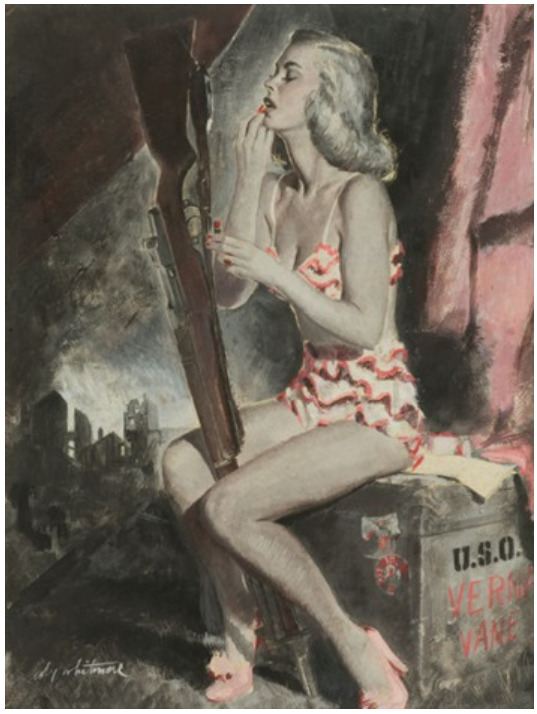
Coby Whitmore worked with mixed media on paper, canvas, and boards and mainly created illustrations of the post-WWII era and his favorite topic was man-woman relationships.
Edith Schiele in Striped Dress, Sitting, 1915
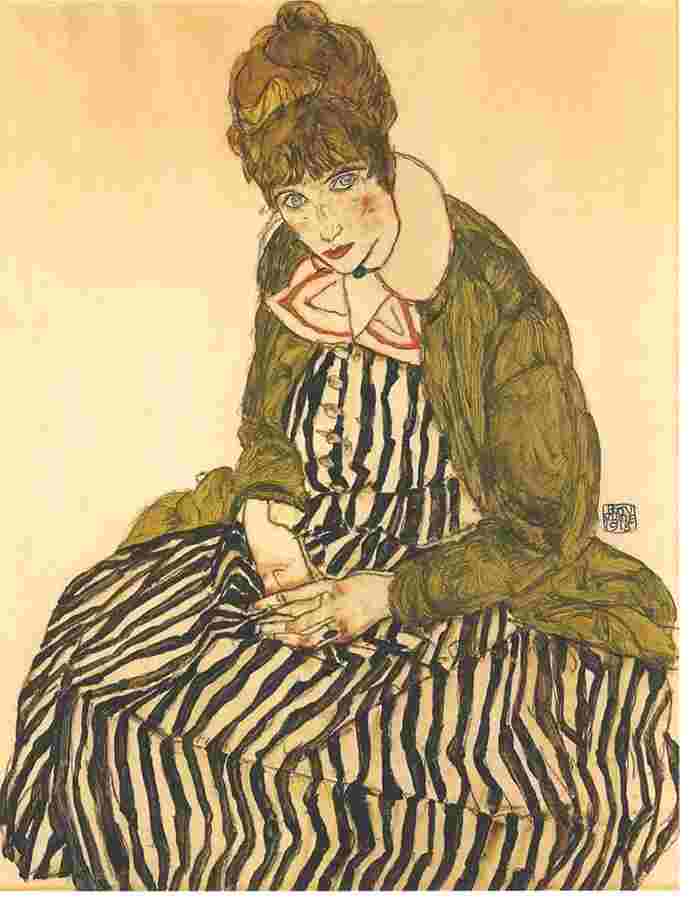
Egon Schiele (born 1890, died 1918) was an Expressionist that created portraits with exaggerated or distorted proportions. During the last years of his life, he was very interested in Gouache paintings and drawings.
Over the years, he practiced painting in oil, watercolor, and several Gouache paintings of his beloved wife, Edith, with several exaggerated paintings of explicit depictions.
Albert Beck Wenzell’s Monochromatic Gouache Illustrations
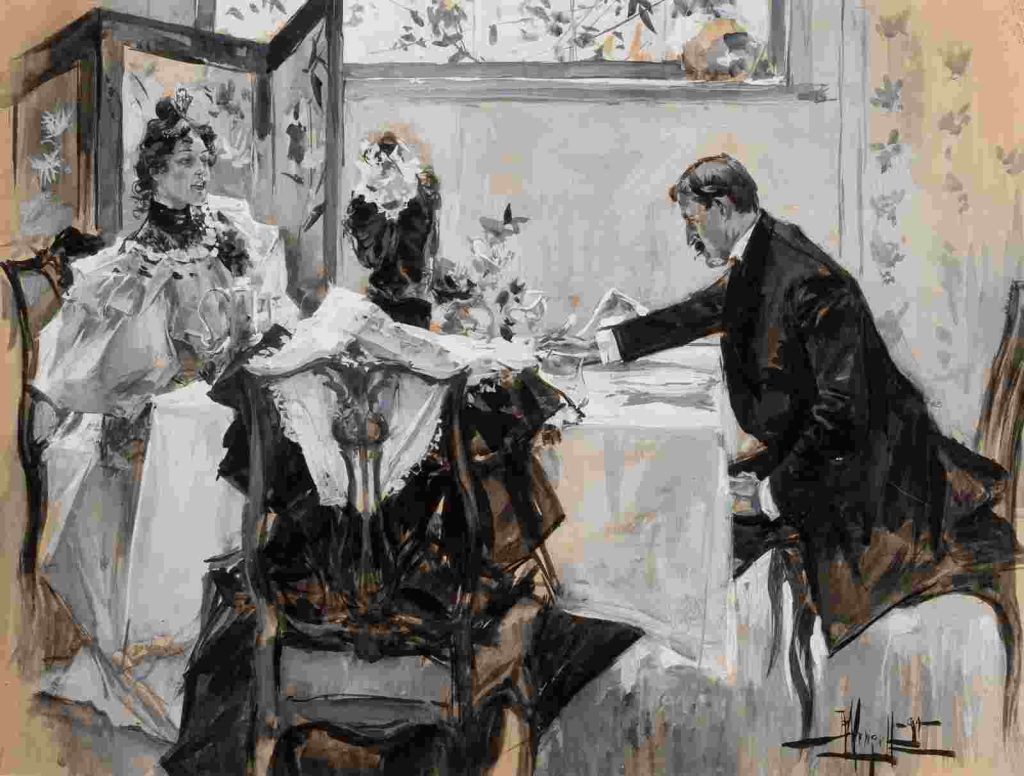
Albert Beck Wenzell (born 1864, died 1917) was an illustrator best known for his female figures and landscapes. He typically painted Gouache pieces in black and white on a warm-toned board.
Wenzell not only specialized in Gouache but also in oil painting, in which he also had several masterpieces. His works are notable in the society of illustrators, and he heavily influenced many artists today.
Celestial Eyes, Francis Cugat, Gouache Painting, 1924
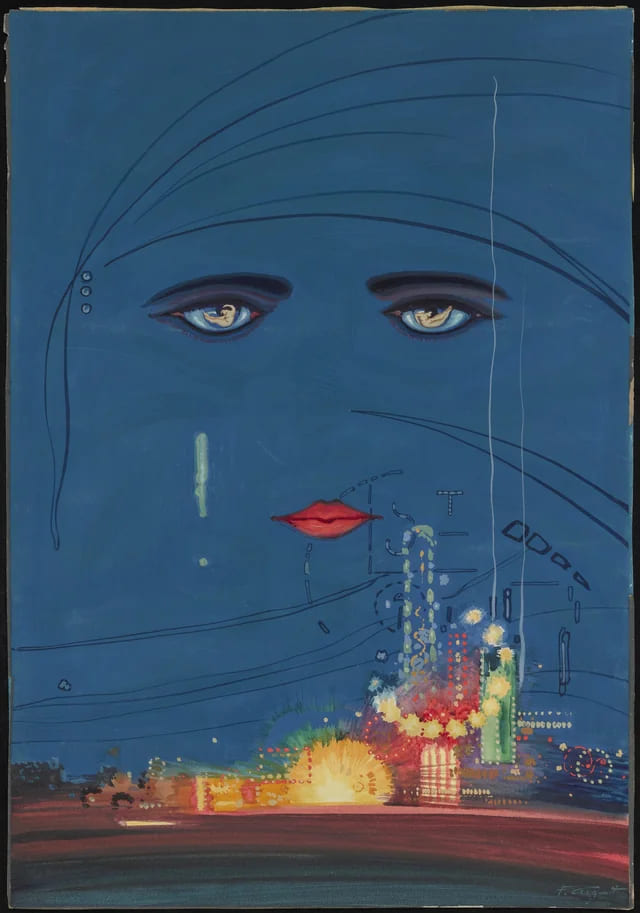
Make sure you spot that the reflection in the eyes are naked figures 🙂
Architectural Capriccio with a Monumental Arch, Jean Nicolas Servandoni
Do you think only illustrations are possible or portraits? Look at this majestic architectural painting of an incredible scale and detalization – it was created with gouache in the 18th century!
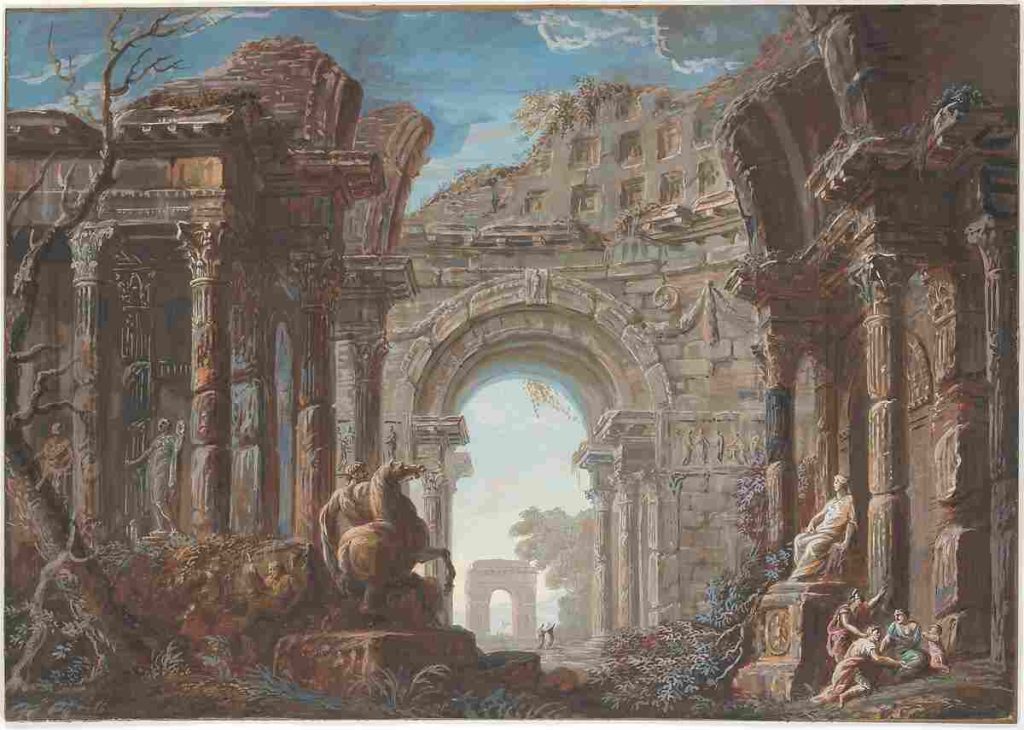
Servandoni was trained in Italy and you can clearly see the Italian influence.
Now that you’ve discovered some of the most famous Gouache paintings, you can realize that Gouache combines the best characteristics of each medium; that’s why it’s beginner-friendly and professional at the same time.
During the 17th, 18th, and 19th centuries, Gouache was frequently used worldwide to create the most elegant paintings of the time. The artists represent the beauty and mystery of the mind.
Remember to be constantly inspired, don’t let yourself down, and be motivated all the time to reach your desired career in your life.

Masha Eretnova, born in 1991, is a Buenos Aires-based certified teacher, artist, and member of the Professional Artist Association with 20+ years of personal painting journey.
She started painting and drawing very early and is now an international abstract artist and educator passionate about acrylic painting, gouache, and crafts.
Her works are part of international exhibitions and contests, including ArtlyMix (Brazil), Al-Tiba 9 (Spain), Exhibizone (Canada), Italy, and many more.
Besides her artistic pursuits, Masha holds a post-grad diploma in Teaching Film Photography and 2 music school diplomas: piano and opera singing.

